Pod Drives: Volvo Penta IPS, Cummins Zeus, ZF Marine, and CAT
Wondering what a pod drive is? Here’s an explanation, and an overview of the advantages and disadvantages of their use in recreational boats.
- Pod drives are a marine power system that eliminates the need for shafts, struts, and rudders. Instead of using traditional running gear to transfer the engine's power into thrust, a "pod," consisting of the transmission, outdrive, and propeller(s), is mounted right through the bottom of the boat.
- The first pod drive system was the Volvo Penta IPS, which was released in 2005. Now, other manufacturers such as Cummins, ZF Marine, and Caterpillar have began producing pods.
- Some advantages of pod drives include boosting efficiency gains, an increase in the boat’s useable space, and enhanced handling and maneuverability. Other than cost, the list of pod drive disadvantages fall surprisingly short.
Pod drives, including the Volvo Penta IPS, Cummins Zeus, ZF Marine POD 4000, and CAT Three60 POD 650 have taken the recreational boat market by storm during the recent past. And with good reason—these propulsion systems offer several major-league advantages over traditional inboard power, so once a few savvy boaters got their hands on ‘em, word travelled fast.
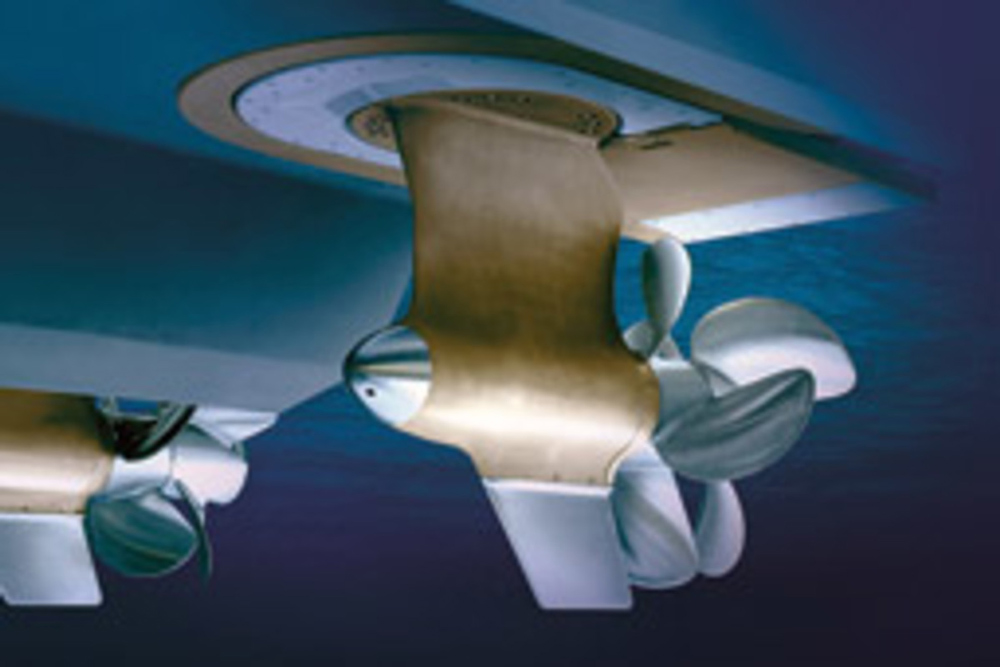
Since pod drives eliminate shaft angle and are more hydrodynamic than shafts, struts, and rudders, the efficiency gains are significant.
What are Pod Drives?
Pods are a relatively new power system—the first Volvo Penta IPS was introduces in 2005—that eliminates the need for shafts, struts, and rudders. Instead of using traditional running gear to transfer the engine's power into thrust, a "pod," consisting of the transmission, outdrive, and propeller(s), is mounted right through the bottom of the boat.
The pod itself articulates to direct propeller thrust, so no rudders are needed. And the part of the pod below the waterline is designed to shear free of the engine without leaving a hole in the boat, in the case of a catastrophic grounding. Most pod drives come in pairs, but there are a few single pod rigs, too (see Testing the Single Pod 34, to gain some insight into how a single pod works in a SeaVee 340i).
Today, Volvo Penta has the widest range of pod drives powered by diesel engines, ranging up to 1,000 HP. Caterpillar is a relative newcomer to producing pods (though they previously could be mated with some Zeus offerings), but they have a similar range. Cummins Zeus has a somewhat more limited model line, and to make sure there’s no confusion, is no longer joined at the hip with Mercury Marine. Their agreement to supply integrated power systems known as Cummins MerCruiser Diesel Marine was dissolved several years ago. ZF Marine, meanwhile, has ceased producing its POD 4000, but you may still run across them in used power boat listings.
So now that we know what a pod is and which there are to choose from, what’s so good about them? And, would a pod-driven boat be right for you? Let’s find out.
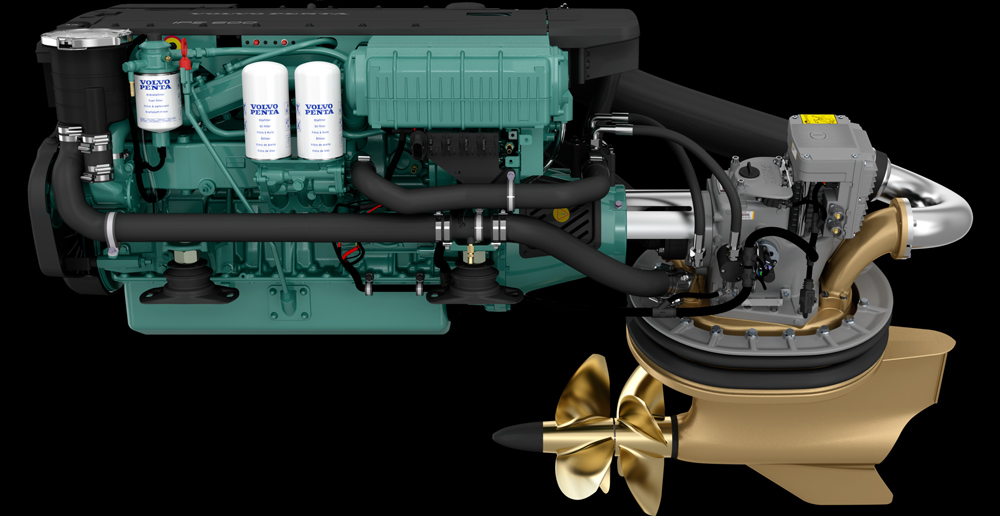
Volvo Penta first introduced pod drives to the recreational marine market, with their IPS system.
Advantages of Pod Drives
The advantages of pod drives are numerous. For starters, they offer an efficiency gain of between 15 to 30 percent when compared to straight inboards. Since they protrude beneath the waterline and face directly forward (in the case of Volvo Penta IPS) or directly aft (in the case of Cummins Zeus, ZF Marine, and CAT) there’s no efficiency-sapping shaft angle, as there is with inboards. That means thrust is directed in a straight line. On top of that, pods are more hydrodynamic than traditional running gear, and rudders are eliminated. Net result? It takes fewer horses and less fuel to propel a boat to the same speeds than it does with straight inboard power systems. Added bonus: fuel capacity can be trimmed accordingly, which saves on a boat’s wet displacement, further boosting efficiency gains.
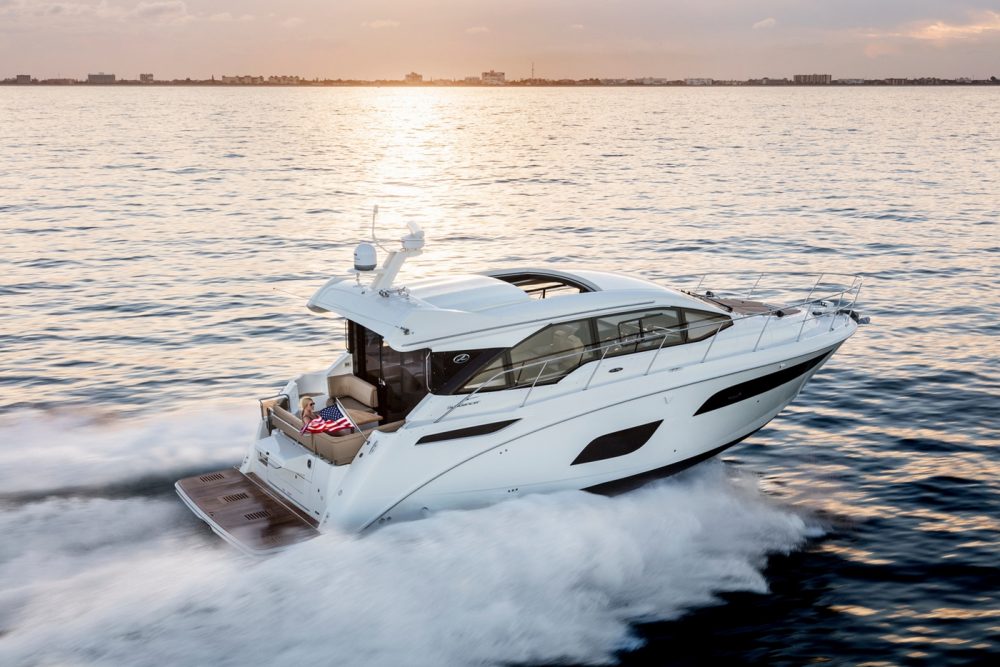
Zeus pod drives, the second system to hit the market, can improve both performance and interior layout in boats like this Sea Ray Sundancer 460.
Another advantage of pod drives is an increase in the boat’s useable space. The engines can be mounted farther aft in the boat (again, no long shafts are necessary) and this usually opens up gobs of space inside the hull for an extra mid-cabin berth, a large stowage area, or in some cases an entire stateroom. There’s also space saved aft of the engines thanks to the elimination of shafts, stuffings boxes, rudderposts, and steering gear, so the area under the cockpit is wide-open and available for use as stowage, fishboxes or chill boxes, fender lockers, and the like.
Handling and maneuverability is yet another major-league advantage with all of these pod systems. Since the drives articulate independently, thrust can be directed wherever you need it. This makes it possible to literally spin in the boat’s own length, turn 90-degrees on a dime, and carve tighter turns at speed. The pods are controlled by a joystick, so maneuvering is as simple as pushing or turning the stick in whichever direction you want the boat to go—there’s no more opposing the engines and jockeying the throttles to back into a slip or make a tight turn in the marina basin.
Anglers too will discover that fishing with pod drives is advantageous. And everyone will appreciate station-keeping functions like the Zeus Skyhook, Volvo Penta Dynamic Positioning, and Caterpillar Station Keeping. With these “virtual anchoring” features, the boat uses a combination of GPS, electronic controls, and the pods to maintain an exact position in spite of wind, waves, and current. All you have to do is press a button and the boat does the rest.
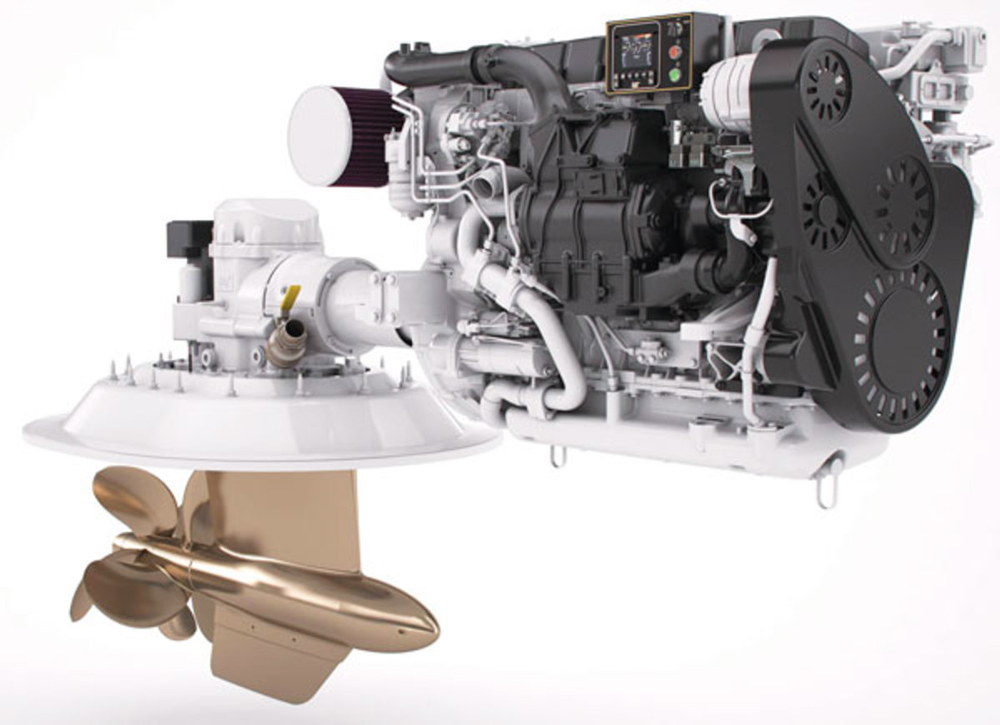
Caterpillar pod drives are the latest entry in the pod drive market.
Disadvantages of Pod Drives
We know that everything about boats incorporates trade-offs, so what are the disadvantages of running with pods?
In truth, the pod drive’s list of negatives is startlingly short. First off, there’s cost. A boat’s hull and weight distribution have to be designed specifically for pod drives, so there’s a substantial cost to the boat-builder. As a rule of thumb, these systems add 10 to 15 percent to the cost of an average boat, though this comes down over time as more and more pod boats are on the market long enough to recover design costs. Making repairs to pod drives also tends to cost more than repairing standard-issue inboard running gear.
Oddly, the other major disadvantage to pods is purely psychological: it just feels weird to think about those pods protruding right out from under your boat, especially for IPS with its forward-facing propellers. You’re no more (or less) likely to strike something than you are with straight inboards, but people have a hard time getting used to the concept.
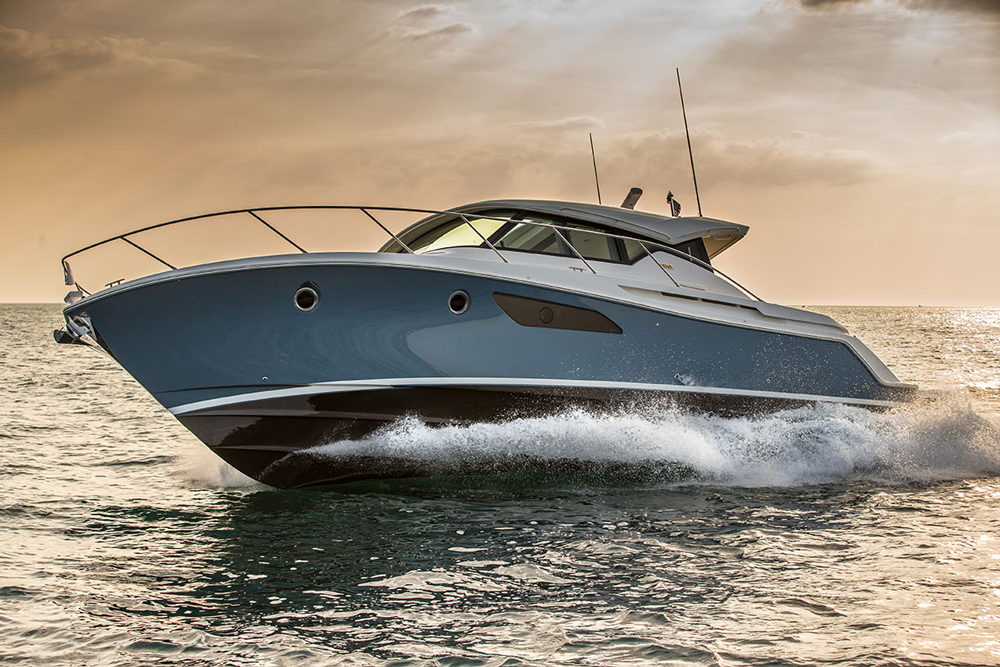
Getting used to the idea of running with pods beneath the waterline may take some getting used to, but the benefits—including enhanced handling and sporty performance on relatively big boats like this Tiara C44 Coupe—make them a good choice for many boaters.
Forward-facing props are, however, becoming more accepted by the boating public. In fact, Volvo Penta introduced its pod-like Forward Drive for stern drive applications just a few years ago, and it’s now widely used by several runabout and sport boat builders. Those forward-facing props, odd as they may seem, are significantly safer than regular stern drives for watersports like wake surfing because they move the spinning propellers several feet forward and under the boat. Our review of the Four Winns TS222 provides an excellent example of one such application.
Are pod drives right for you? That’s a question that you can only answer for yourself, but a direct comparison proves illuminating. We performed one on a Hunt 52 with and without IPS, which has certainly led us to believe makes a strong case for pod drives.
Want to learn about some specific boats rigged with pods, and how pod power helps make them better boats? Read these reviews and watch these videos of pod drive boats:
- Cruisers Yachts Cantius 42
- Cruisers Yachts Cantius 54
- Cruisers Yachts 60 Fly
- Monte Carlo Yachts 70
- Prestige 460 Flybridge
- Sea Ray Sundancer 460
- Tiara F44 Flybridge
Editor's Note: This article was originally published in March 2012 and updated in October 2018.












